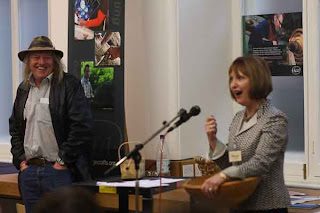It seems industrialisation has led to the increasing feeling that work is bad and hard hand labour is something to be minimised. Intellectual labour is more highly regarded and rewarded. There are other views though. I like this little traditional story so much I included it in my book about wooden bowl turning.
The Industrialist and the fisherman
A rich industrialist was horrified to find a fisherman lying comfortably beside his smoking his pipe.
“Why aren’t you out fishing?” asked the industrialist.
“I’ve caught enough fish for the day,” said the fisherman.
”Why don’t you catch some more?”
”What would I do with them?”
”Earn more money. Then you could have a motor fixed to your boat and go into deeper waters to catch more fish. That would bring you money to buy nylon nets, so more fish, more money. Soon you would have enough to buy two boats, even a fleet of boats. Then you would be a rich man like me!”
“What would I do then?” The fisherman asked.
”Then you could sit back and enjoy life!”
”What do you think I’m doing right now?”
All this thought about hard work came about whilst breaking rocks for a new path today. A passer by told me it looked like slave labour, I told him I was getting paid and enjoying it but I don't think he was convinced.
Folk regularly stop and watch me turning bowls on my foot powered lathe. "That looks hard work" they say and it is always said in the tone of voice that implies that hard work is undesirable. Yet I enjoy the physicality of my work and presumably these folk enjoy a physical challenge too since the path past my workshop leads steeply up hill and over Kinder Scout. But here is the difference. Physical graft it seems is a good think during our leisure hours and a bad thing in our work hours. How many people these days pay hefty gym fees and sweat for hours a week on machines but still think physical work is in some way degrading?
Dr Howard Garner's theory of multiple intelligences has gained wide acceptance for the idea that the view of intelligence based on IQ tests was far too narrow, that in fact we have many ways of being intelligent.
| Linguistic intelligence ("word smart"): | ||||||||||
| Logical-mathematical intelligence ("number/reasoning smart") | ||||||||||
| Spatial intelligence ("picture smart") | ||||||||||
| Bodily-Kinesthetic intelligence ("body smart") | ||||||||||
| Musical intelligence ("music smart") | ||||||||||
| Interpersonal intelligence ("people smart") | ||||||||||
| Intrapersonal intelligence ("self smart") | ||||||||||
| Naturalist intelligence ("nature smart") |
The Education world has taken this up in a big way but primarily as a narrowly focused teaching tool ie, this child is a kinesthetic learner so we must teach in a way that recognises that. What I would like to see is a more widespread recognition that there is no hierarchy and that being linguistically or numerically bright is not more intelligent than being musically or kinesthetically adept although it may mean you will earn more money.
In my own life I like to try to achieve a balance of physical and mental work. I get frustrated when I see one man walk along a road spraying circles around pot holes and another coming along and filling them. I feel the pot hole filler may benefit from being given the trust and training to make value judgments and the spray can man may benefit from a bit of graft. The work of a self employed craftsperson is one of those sadly rare jobs that allow use of mind body and soul, it's more about making a life than making a living.






























